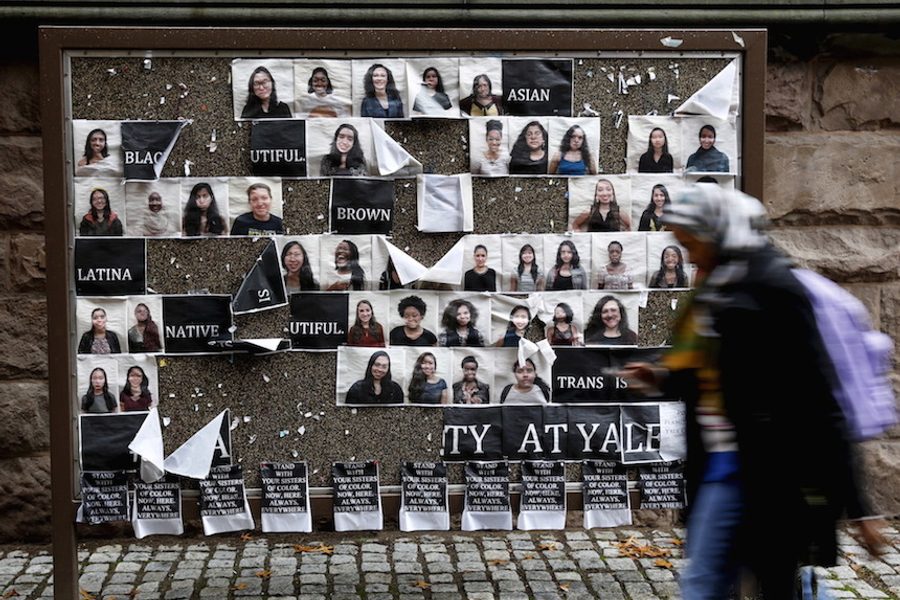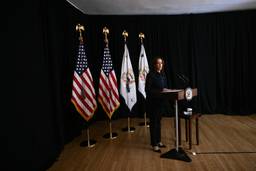I Saw Disturbing Racism at Yale After 9/11. Sadly, It Seems Little Has Changed.
When will our universities stop treating students of color as throwaway items in the grooming of privileged white students?
Saqib Bhatti

As I read about the protests by students of color at Yale University this past fall, it triggers memories from my own undergraduate years there as a Muslim Pakistani-American student; I was a sophomore when 9/11 happened.
On March 27, 2003, seven days after the start of the Iraq War, my friend Katherine Lo heard unknown male voices in her suite. One of them said, “This is the room.” She locked her bedroom door and remained as quiet as possible so they would think she wasn’t home. After about 10 minutes, they left.
But she says they left her a parting gift, a note on her white board that read, “I love kicking the Muslims ass bitches ass! They should all die with Mohammad. We as Americans should destroy them and launch so many missiles their mothers don’t produce healthy offspring. Fuck Iraqi Saddam following fucks. I hate you, GO AMERICA.”
Kat stayed in her bedroom the rest of the night, terrified they would come back. She says that one of the men was armed with a two-by-four wooden plank, according to her suitemates, and that the university later told her that the intruders were three white men and one Black man, all Yale students.
Kat, who is neither Muslim nor Arab but Chinese-American, was targeted for this attack because she had hung an upside-down American flag outside her window. According to the U.S. Flag Code, hanging the flag upside down is a “signal of dire distress in instances of extreme danger to life or property.” Kat was signaling her distress about the war in Iraq, which endangered thousands of lives.
When the Yale Daily News broke the story two weeks later, other anti-war activists on campus mobilized, and overnight, some three dozen upside-down flags went up all over campus in solidarity. Before I hung one outside my window, I warned my suitemates to keep the doors locked.
Over the next 48 hours, seven incidents of harassment and intimidation targeting anti-war protesters were reported to university police. As for me, I had a close call. A friend of mine saw a group of white men gathered on the street beneath my third story window and confronted them. Frustrated, one of them tried to throw his beer can at my window, but gravity and his own drunkenness got in the way.
The night the Yale Daily News broke the story about Kat, a note was left in front of the Afro-American Cultural Center that said, “I hope you protesters and your children are killed in the next terrorist attack. Signed Fuck You.”
A group, Concerned Black Students at Yale, formed, and convened a town hall meeting to discuss the attacks on students of color and anti-war activists.
I was appalled as a Black student shared stories of students and university employees routinely calling the police on him, assuming he was an intruder. Then, as others spoke, I realized that his experience was a feature of Black life at Yale.
Like students of color at Yale and other colleges today, we were outraged by the university administration’s underwhelming response to the attacks. We felt we were in imminent danger and the administration was not doing enough to guarantee our safety or bring the perpetrators to justice. The morning after the meeting, a group of students took over President Richard Levin’s office at Woodbridge Hall. I was part of the attempt, but didn’t make it in before university officials locked the doors.
We demanded that Levin and Dean Richard Brodhead (now the president of Duke University) sign a letter acknowledging the attacks, agreeing to launch disciplinary investigations, and committing to meet with us in the future to discuss these issues. They refused to sign, although they did eventually accede to some of the demands. The students left Woodbridge Hall, after Levin sent out a campuswide email about the incidents and agreed to hold forums for students to share their concerns.
The next year, the men who had allegedly entered Kat’s suite at night with a weapon were brought before the Yale College Executive Committee for private disciplinary hearings and were put on probation for varying lengths of time. Their names were not made public, although Kat was told their names and permitted to discuss them with others.
Several student organizations criticized the light punishment. They believed that the university’s policy of suppressing the names of perpetrators of incidents of violence and harassment, including sexual violence, on campus endangered other students and prevented true accountability. Levin defended the policy, saying, “To publicize is to convert what could be a learning experience in life to a permanent scar — why would we permanently tarnish the reputation of a 19- or 29-year-old? We’re a humane institution.”
That statement tells us everything we need to know about the precarious position that students of color, and even white women, find themselves in at Yale even today. Yale values us as props. We are there to provide a learning experience for young white men. We are there to help smooth out their rough edges before they go out into the real world. At Yale, they can learn valuable life lessons firsthand, like the fact that it’s bad to try to break into a woman’s bedroom at night with a weapon. At Yale, they can wear offensive Halloween costumes and have a real-life person of color politely teach them about cultural appropriation. Yale provides them a safe space to make these mistakes, without it leaving a “permanent scar.”
But what about the students of color and women relegated to the role of teacher/victim in this training ground for America’s leaders? Where is our safe space? What about our scars? Being a student of color at Yale is a hostile experience. Our “bright college years” are collateral damage in this learning experience for white men.
In May 2004, more than a year after the attempted attack on Kat, a group of students (including me) anonymously posted flyers around the Yale campus with the names and pictures of her attackers, under the headline, “Does Yale want to be known for expelling students who commit acts of intolerance and hate or harboring them?” No one came forward taking responsibility for the flyers, but one white student, Thomas Frampton, was seen carrying them and was brought before the Yale College Executive Committee. Without a hint of irony, the committee charged him with harassing and intimidating the students who had tried to break into Kat’s room. He was eventually cleared of these charges.
Students of color today, calling themselves Next Yale, are not simply protesting because they are aggrieved by an email about Halloween costumes. They are protesting because they are rightfully outraged about their second-class status on campus. Yale’s current president and dean have acquiesced to some of Next Yale’s demands, such as increasing funding for the university’s cultural centers and appointing new faculty in fields focused on race and ethnicity, but the university still has a long way to go.
The racial tensions simmering just below the surface at Yale will continue to boil over, like they did 12 years ago and again this fall, until Yale fundamentally changes its approach to students of color and women, and starts valuing their educations and college experiences as much as those of white students, especially white men.
Saqib Bhatti is the Executive Director of the Action Center on Race & The Economy.









